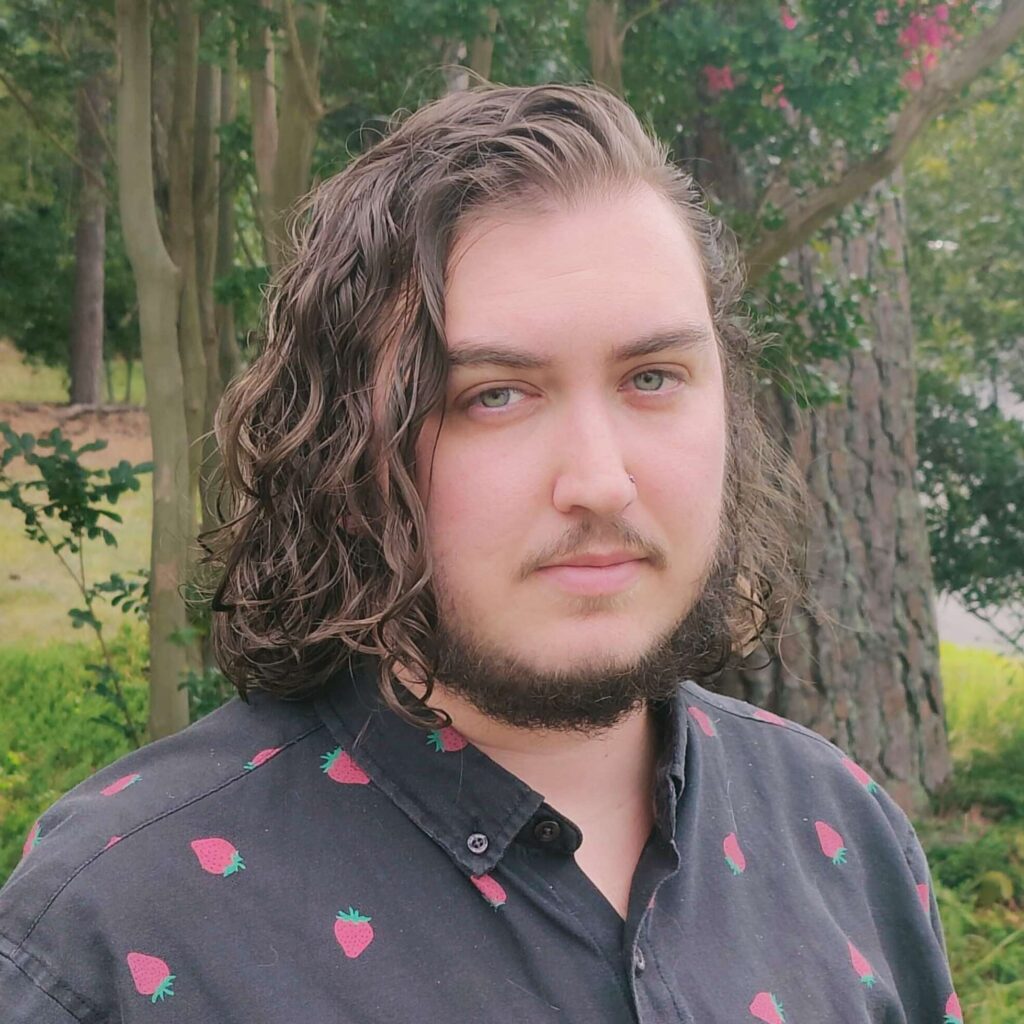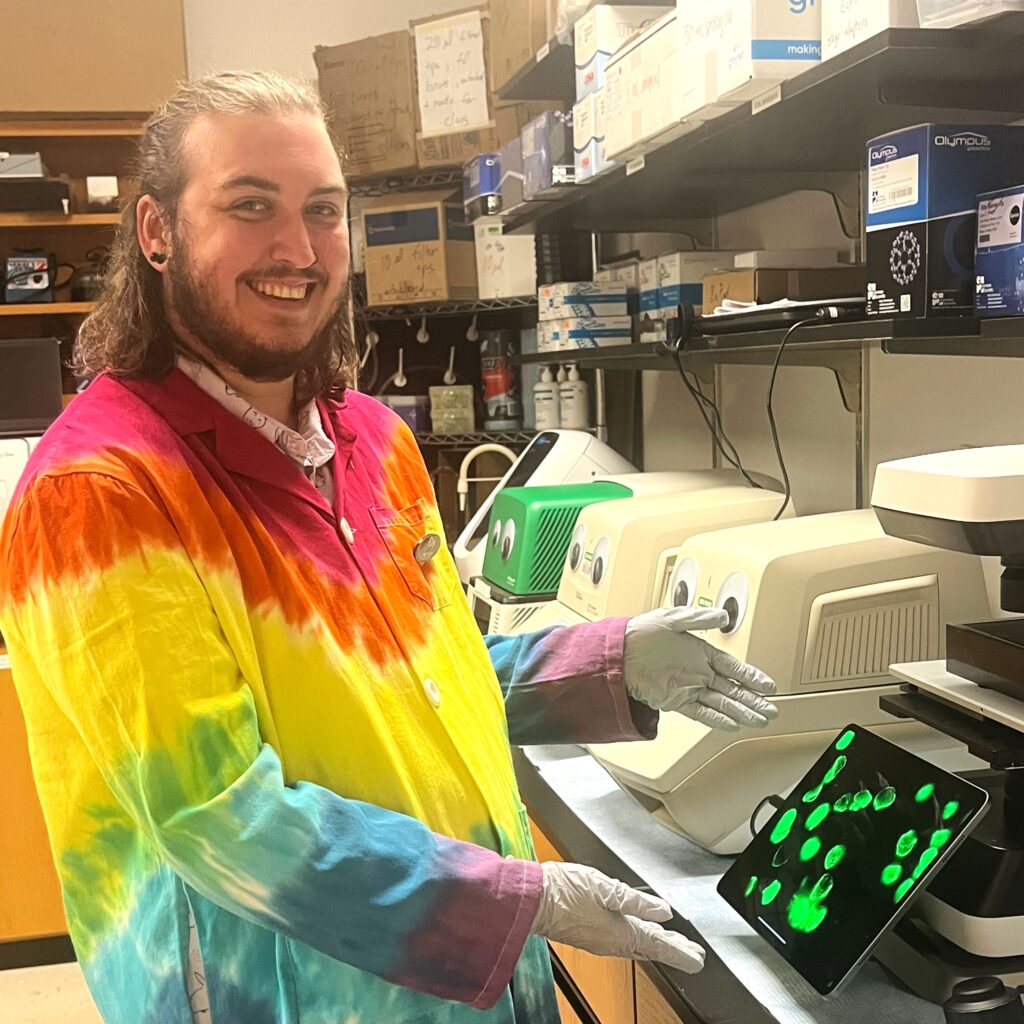Biotechnology Through the Eyes of Dr. Raymond Haggerty!
Before we even began talking, the way Dr. Raymond Haggerty dressed and carried himself reflected a most genuine and curious scholar. I was already intrigued that he majored in quantitative biology as an undergraduate, and then he mentioned that it was the first time that UNC-Chapel Hill had offered that major! This piqued his interest and also aligned with his curiosities with programming and applying those concepts to answer biological questions. This initial interest led to him furthering his education and spending years engaging in research and, as of recently, landing the position as a postdoctoral teaching scholar for the Biotechnology (BIT) Program at NC State.

After earning his Bachelor’s degree in Quantitative Biology, Dr. Haggerty went on to pursue his PhD in Bioinformatics & Computational Biology at UNC-Chapel Hill. When he reflected back to what he enjoyed most during his graduate studies, which included being a research assistant, instructor, and postdoctoral researcher, he realized he wanted to focus on his teaching, which led him to becoming a postdoctoral teaching scholar. Since he chose to pursue a path as an educator, I wanted to know what his teaching philosophy was. He told me that, although it’s a work in progress, his goal “is to be welcoming and inclusive in [his] teachings” and to “make resources and information as accessible as possible for students to help maximize their learning.”
Outside of the lecture hall, Dr. Haggerty has been involved in numerous research projects since his undergraduate years. For his first research project, he got connected to the lab through a program which was looking for people that knew how to program in MATLAB, a programming language and numeric computing environment. He worked as an Undergraduate Research Assistant for Dr. Kerry Bloom at UNC-Chapel Hill. He developed a mathematical model of the pericentromere to determine which data best described the microscopy data they had on chromatin dynamics and which chromatin structures drive chromosome segregation. On top of delving deeper into quantitative biology, he just so happened to have taken a class in MATLAB, which made this the perfect opportunity to bring together mathematical modeling and microscopy data to explain, confirm, and answer scientific questions. After graduating and moving on to graduate school, he was confident in his interest towards the quantitative and computational aspects of biology, but that did not deter him from exploring other biological topics that used similar computational methods. He gained more and more experience working in the lab and developed a passion for microscopy image analysis.

Currently, Dr. Haggerty co-teaches BIT 402/502, a professional development course for careers in biotechnology, and BIT 410/510 Manipulating Recombinant DNA, a core laboratory-based course for students interested in the biotechnology field. However, as a member of the BIT Program, he has the amazing opportunity of creating his own curriculum. When asked, he told me that he “became interested in microscopy and being able to extract data out of microscopy images which is why [his] course will be on microscopy image analysis,” though he has yet to name it. As we continued talking, I got to know Dr. Haggerty as more than a postdoctoral teaching scholar; I got to know him as a learner.
“I am wanting to work on my sense of instructor identity and figure out what kind of instructor I want to be, and hope to bring computational expertise into the BIT Program.”
-Dr. Raymond Haggerty
If a world where quantitative biology or similar studies did not exist, Dr. Haggerty would have gone with Japanese studies. He minored in Japanese studies and even studied abroad during the summer of 2010 at Kanda University of International Studies in Chiba, Japan. But why Japanese? “I already knew how to count to ten in it when I was in high school and my high school offered Japanese, so I decided to take it and continued on with it in college.” He ended up taking a cooking course where they made Japanese cuisine and where all the instructions were in Japanese. It didn’t take long from there for us to start talking about various different Japanese dishes such as takoyaki and okonomiyaki. He is also currently putting that experience to use, as the BIT 402/502 course is being taught in conjunction with Nagoya University in Nagoya, Japan. The NC State class is scheduled at 8:00 PM to account for the time difference (13 or 14 hours, depending on Daylight Savings Time in the US). This collaboration is part of NC State’s COIL initiative, started during the pandemic, to provide students who can’t study abroad with a similar cultural experience.
“Take in time to explore more options and not feel locked onto a specific path.”
-Dr. Raymond Haggerty
We eventually concluded our interview with Dr. Haggerty emphasizing the importance of exploring all the options related to majors and future prospects. He wished that not only he, but current students also, would spend time to consider all the opportunities in order to help them realize their true passion. So, whether it be concerns related to his classes or to just talk about Japanese food, one thing Dr. Haggerty wants students to know is that his classroom and the BIT Program are both a safe and welcoming place. Just like him, we are all lifelong learners looking to find out our true identity.